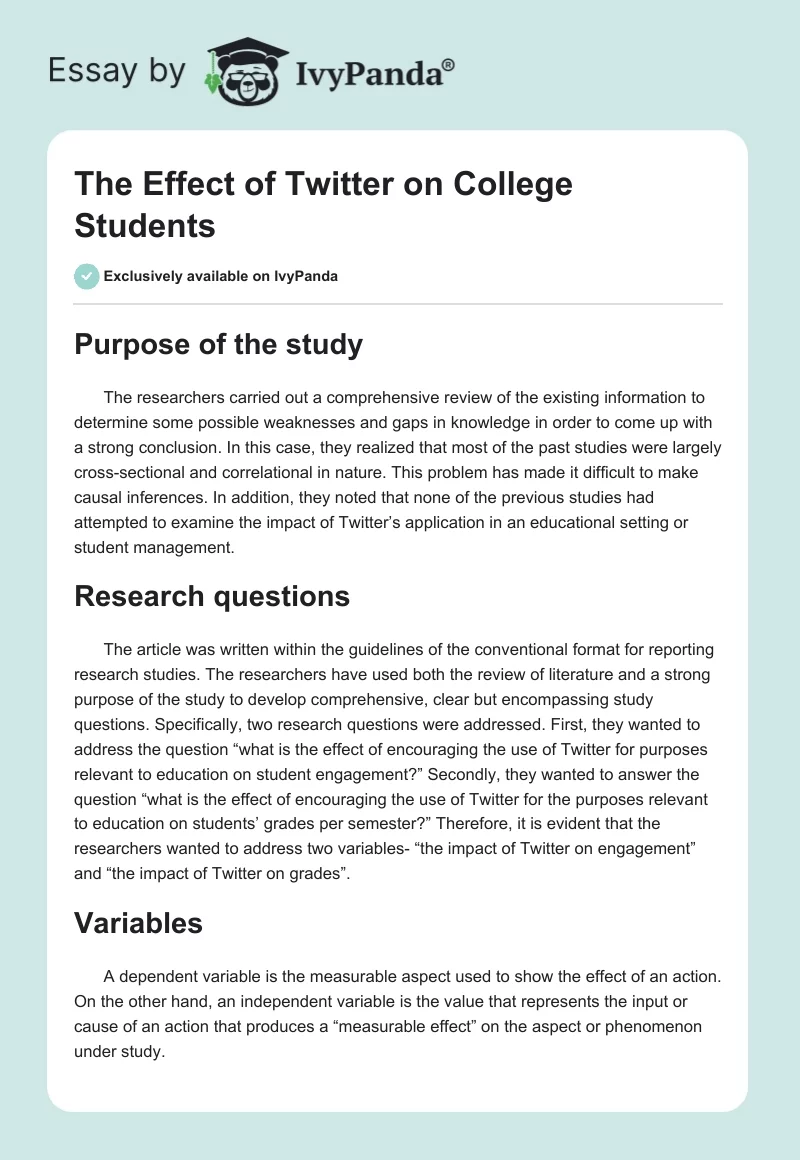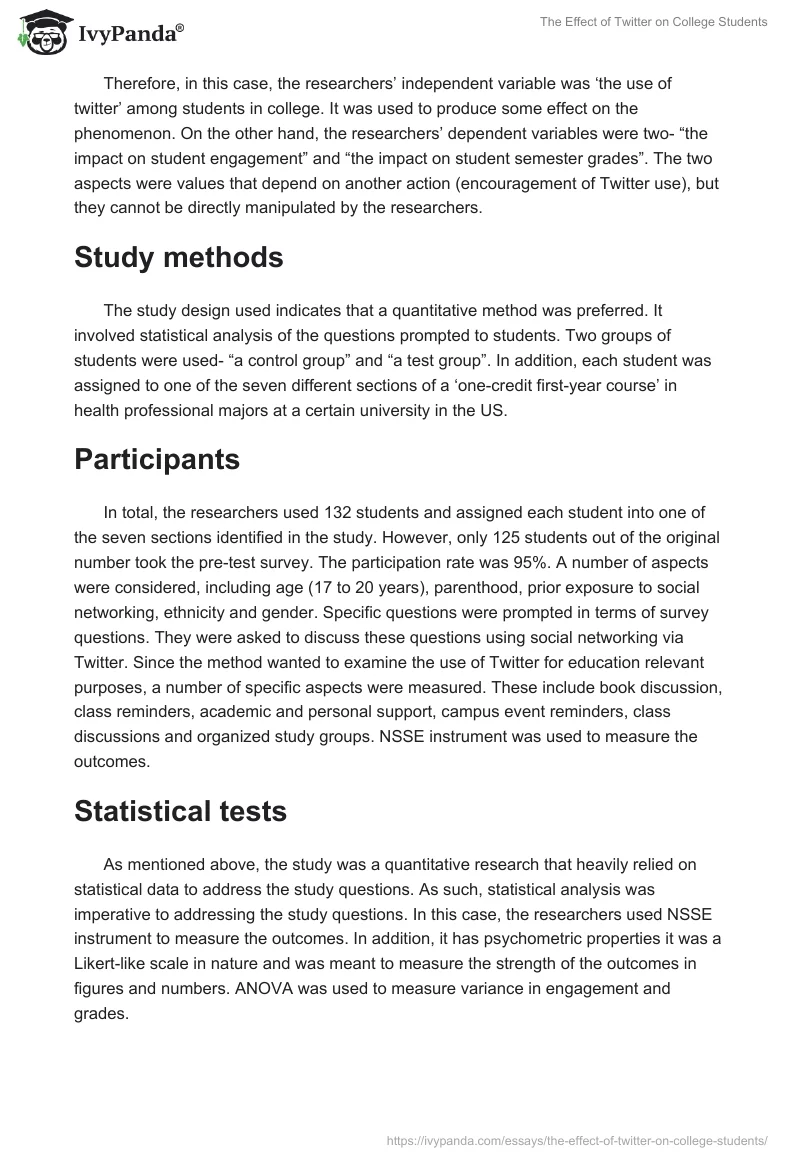Purpose of the study
The researchers carried out a comprehensive review of the existing information to determine some possible weaknesses and gaps in knowledge in order to come up with a strong conclusion. In this case, they realized that most of the past studies were largely cross-sectional and correlational in nature. This problem has made it difficult to make causal inferences. In addition, they noted that none of the previous studies had attempted to examine the impact of Twitter’s application in an educational setting or student management.
Research questions
The article was written within the guidelines of the conventional format for reporting research studies. The researchers have used both the review of literature and a strong purpose of the study to develop comprehensive, clear but encompassing study questions. Specifically, two research questions were addressed. First, they wanted to address the question “what is the effect of encouraging the use of Twitter for purposes relevant to education on student engagement?” Secondly, they wanted to answer the question “what is the effect of encouraging the use of Twitter for the purposes relevant to education on students’ grades per semester?” Therefore, it is evident that the researchers wanted to address two variables- “the impact of Twitter on engagement” and “the impact of Twitter on grades”.
Variables
A dependent variable is the measurable aspect used to show the effect of an action. On the other hand, an independent variable is the value that represents the input or cause of an action that produces a “measurable effect” on the aspect or phenomenon under study.
Therefore, in this case, the researchers’ independent variable was ‘the use of twitter’ among students in college. It was used to produce some effect on the phenomenon. On the other hand, the researchers’ dependent variables were two- “the impact on student engagement” and “the impact on student semester grades”. The two aspects were values that depend on another action (encouragement of Twitter use), but they cannot be directly manipulated by the researchers.
Study methods
The study design used indicates that a quantitative method was preferred. It involved statistical analysis of the questions prompted to students. Two groups of students were used- “a control group” and “a test group”. In addition, each student was assigned to one of the seven different sections of a ‘one-credit first-year course’ in health professional majors at a certain university in the US.
Participants
In total, the researchers used 132 students and assigned each student into one of the seven sections identified in the study. However, only 125 students out of the original number took the pre-test survey. The participation rate was 95%. A number of aspects were considered, including age (17 to 20 years), parenthood, prior exposure to social networking, ethnicity and gender. Specific questions were prompted in terms of survey questions. They were asked to discuss these questions using social networking via Twitter. Since the method wanted to examine the use of Twitter for education relevant purposes, a number of specific aspects were measured. These include book discussion, class reminders, academic and personal support, campus event reminders, class discussions and organized study groups. NSSE instrument was used to measure the outcomes.
Statistical tests
As mentioned above, the study was a quantitative research that heavily relied on statistical data to address the study questions. As such, statistical analysis was imperative to addressing the study questions. In this case, the researchers used NSSE instrument to measure the outcomes. In addition, it has psychometric properties it was a Likert-like scale in nature and was meant to measure the strength of the outcomes in figures and numbers. ANOVA was used to measure variance in engagement and grades.
Results
Using ANOVA results, the researchers found that both students and members of the faculty were highly engaged in the process of learning using Twitter. They found that the process of learning transcended class work in traditional settings. The study found that Twitter is an important tool in education because it increases the leaner’s’ ability to engage. In addition, it enhances the tutor’s ability to take active and participatory roles.
Value, strengths and limitations of the research
Noteworthy, the topic of study as well as the results are relatively rare in literature. As such, the value of the study is commendable because it yields information that is not only rare, but also fills the identified gap as well as providing evidence that Twitter can be used in improving class work rather than affecting student morals. In addition, the research’s strength is clear because the study used statistical analysis to measure the outcomes in an empirical setting.
Limitations
However, the study was prone to errors and biases because the student community at a single faculty and university is too small to represent the entire student population in the US. In addition, statistics are likely to cause errors and biases.
Application
I find the study applicable in providing additional information to the large topic of study “the positive impact of social media on students as opposed to the traditional thought that students’ morals, behavior and outcomes are degraded by social media”.
Reference
Junco, R., Heibergert, G., & Loken, E. (2010). The effect of Twitter on college student engagement and grades. Journal of computer assisted learning, 10(2), 1365-2729. Web.


